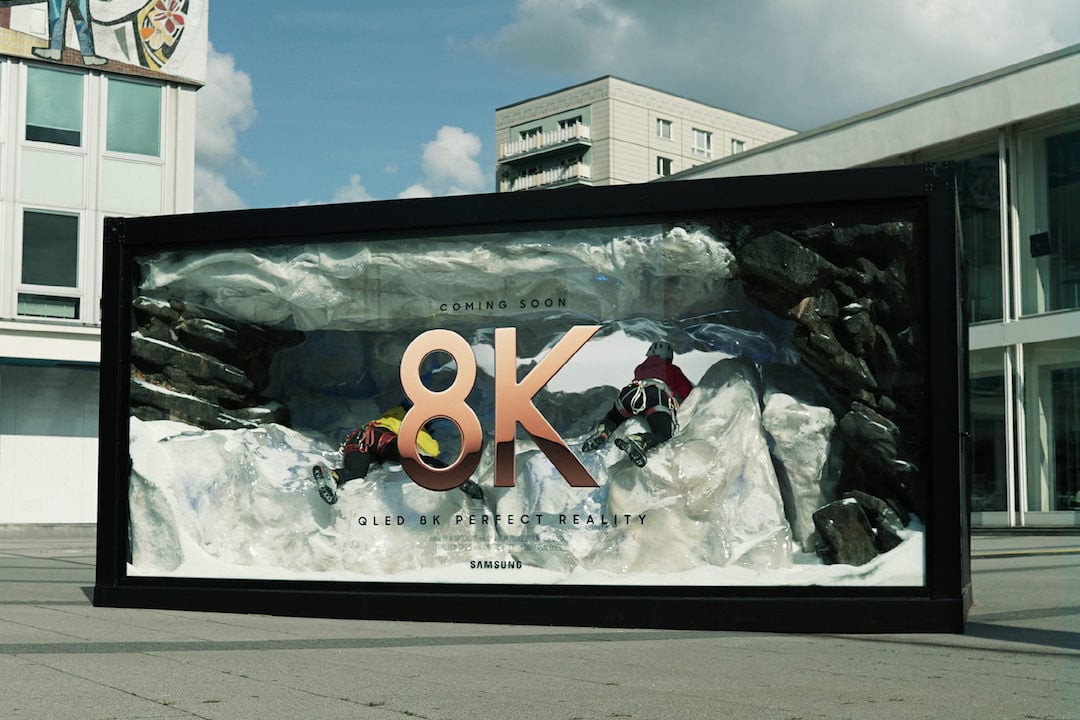
 Samsung's new 8K sets are being launched with an eye-catching digital campaign.
Samsung's new 8K sets are being launched with an eye-catching digital campaign.
One of the highlights of Germany's recent IFA, were the new Samsung 8K QLED sets that are due for release in October and will use AI upscaling to ease the content gap for early adopters.
We promised you some more detail on the new Samsung 8K sets that debuted on the IFA showfloor last week, so here it is.
To start with we can confirm that the new Q900R range features 8K QLED panels and these start where many other screens leave off at 65-inches. They then head up through 75-in, to 82-in and the big daddy of the range at 85-inches.
They also feature what Samsung likes to refer to as ‘several 8K-ready enhancements’, some of which at least seem designed to ease the pain of the content gap that is inevitably going to start yawning impressively after the sets’ release in mid-October.
Chief among them is Samsung’s proprietary 8K AI Upscaling technology, which the company says elevates picture and audio quality to a “level compatible with 8K regardless of the original source quality or format.” While offering the significant qualification regarding the upscaling that it will not work with “PC, game and analogue content” (so no 8K Battle Royale for all the Fortnite players out there — indeed the set turns off most of its processing tricks to reduce latency in a special game mode)), the company says that if users are watching content through a streaming service, set-top box, HDMI, USB or even mobile mirroring, the Quantum Processor 8K recognises and upscales the content to appear in 8K quality.
The real world
How well this will work when it’s out in the real world, and indeed how it works in any form of detail, is all a bit unknown. We presume the set will ship with x number of algorithms designed for upscaling, while a server-side AI process will start crunching through content and delivering updated/more algorithms as it goes.
We would imagine that starting off with a 4K feed will give the unit the best chance of scaling things up to an 8K resolution, but until there is enough native 8K content to feed into one comparing and contrasting is going to be a bit difficult. That said, those that saw the IFA demos have reported that it produces decent pictures even when lowering itself down to 720p, with jaggies cleaned up and little in the way of artefacts
Elsewhere, the sets feature Q HDR 8K based on HDR 10+, 4000 nits peak brightness, 100% colour volume, Direct Full Array Elite, and many of the sort of expensive innovations you would expect from a top end TV set in 2018 including an Ambient Mode, a combined optical cable/power cord, a universal EPG and more.
How much you’ll have to pay for all that is, as yet unknown. Given that its flagship 75-inch 4K QLED set currently will set you back in the region of $5,500 though, expect it to be a fair bit more than that.
Tags: Technology


Comments